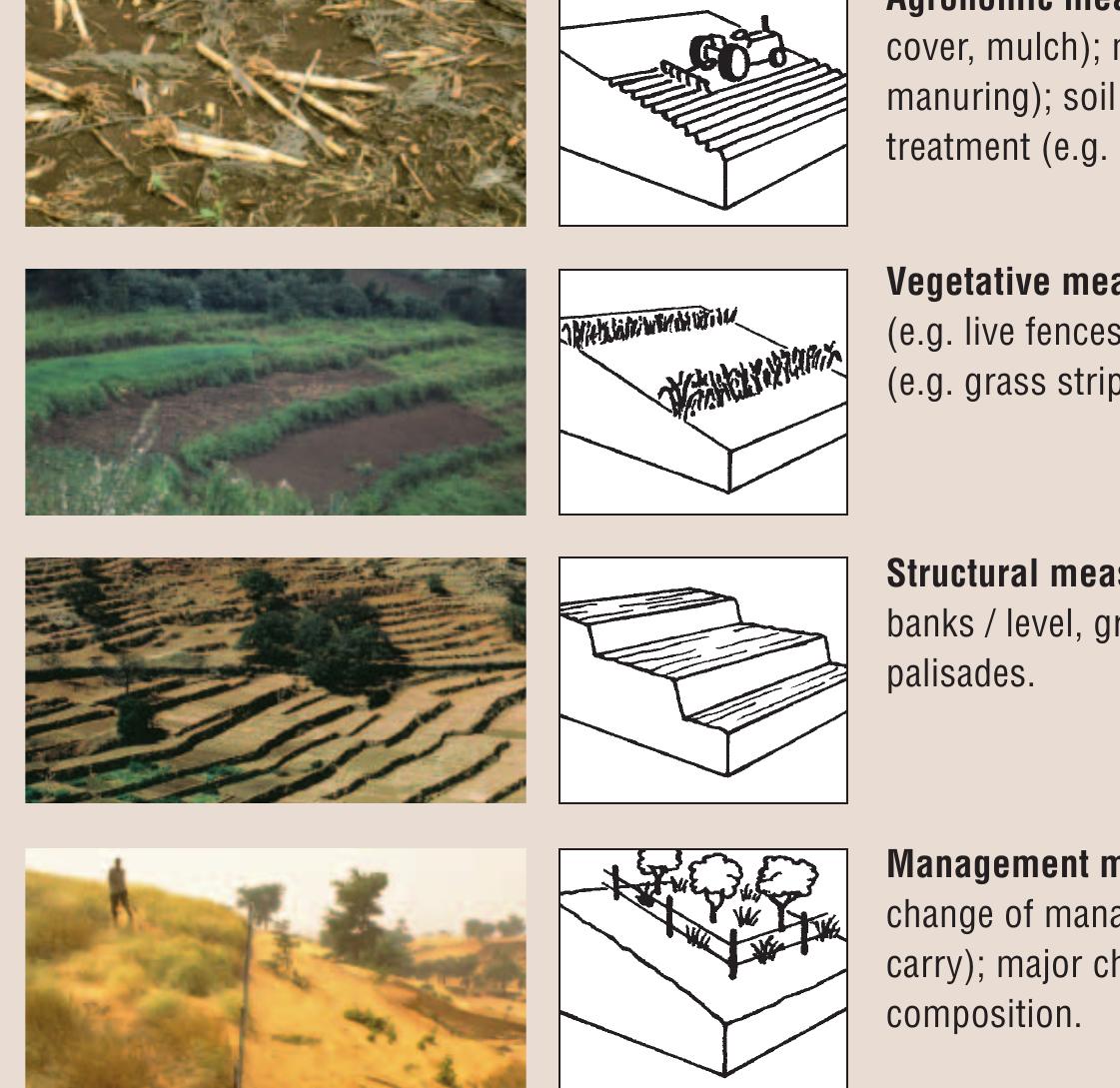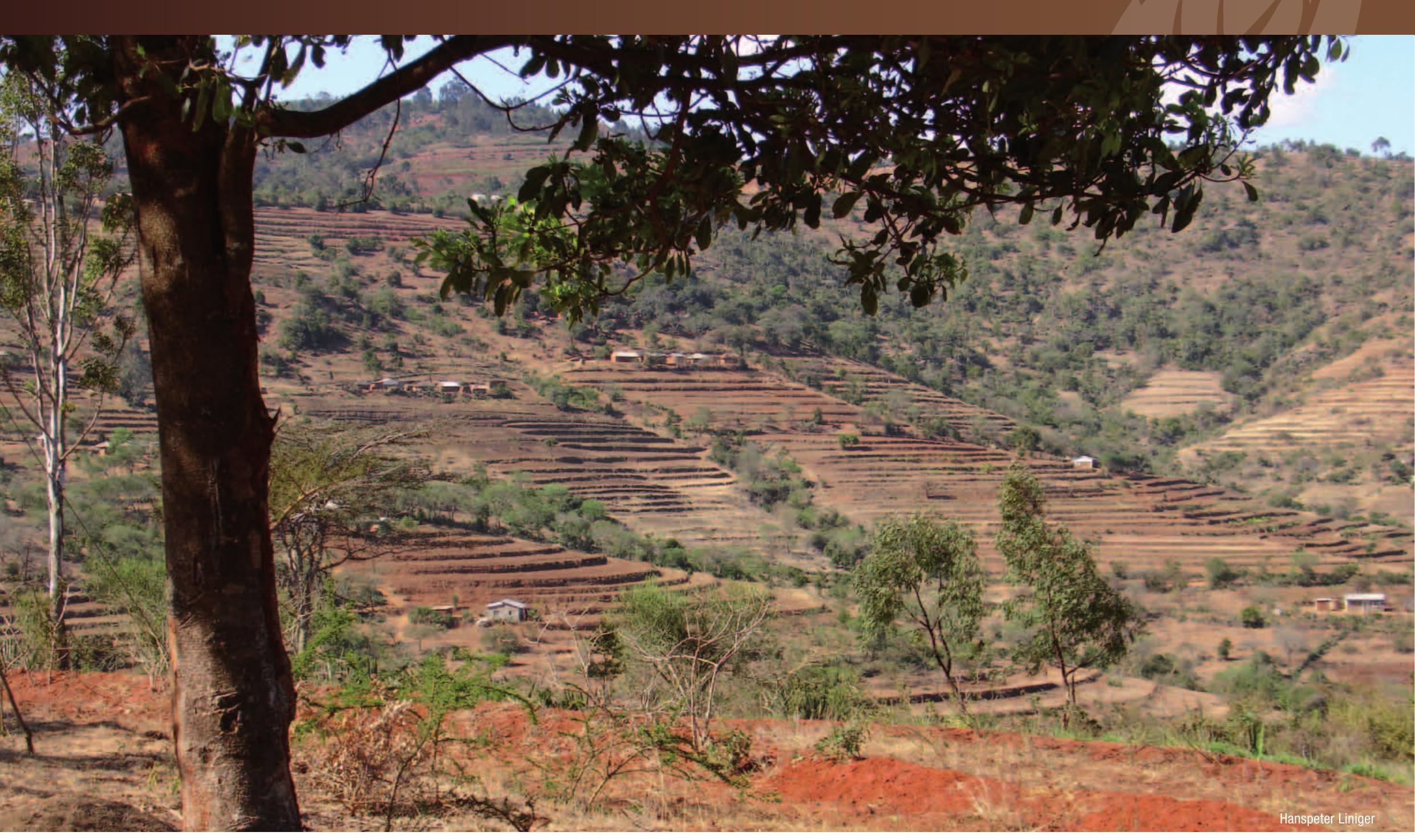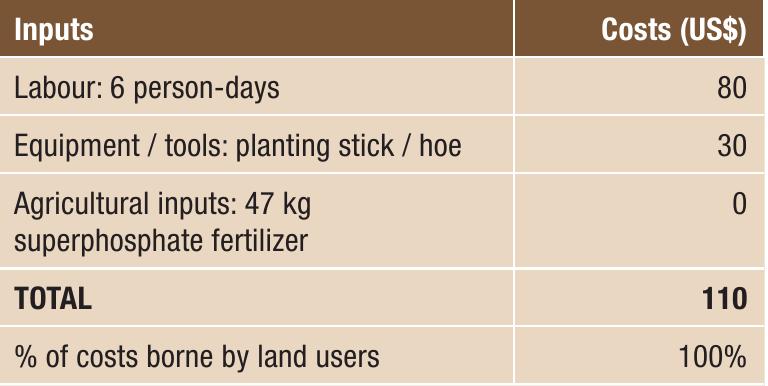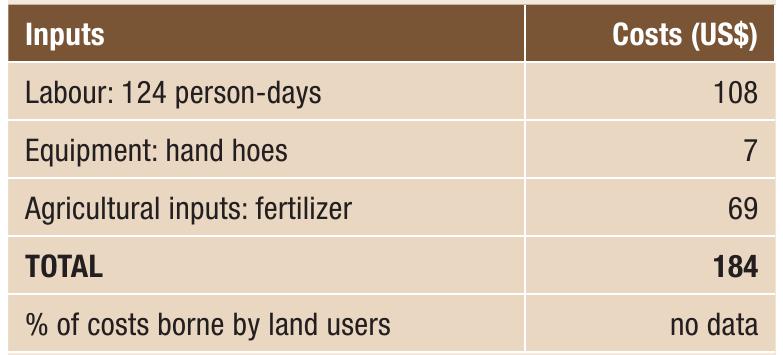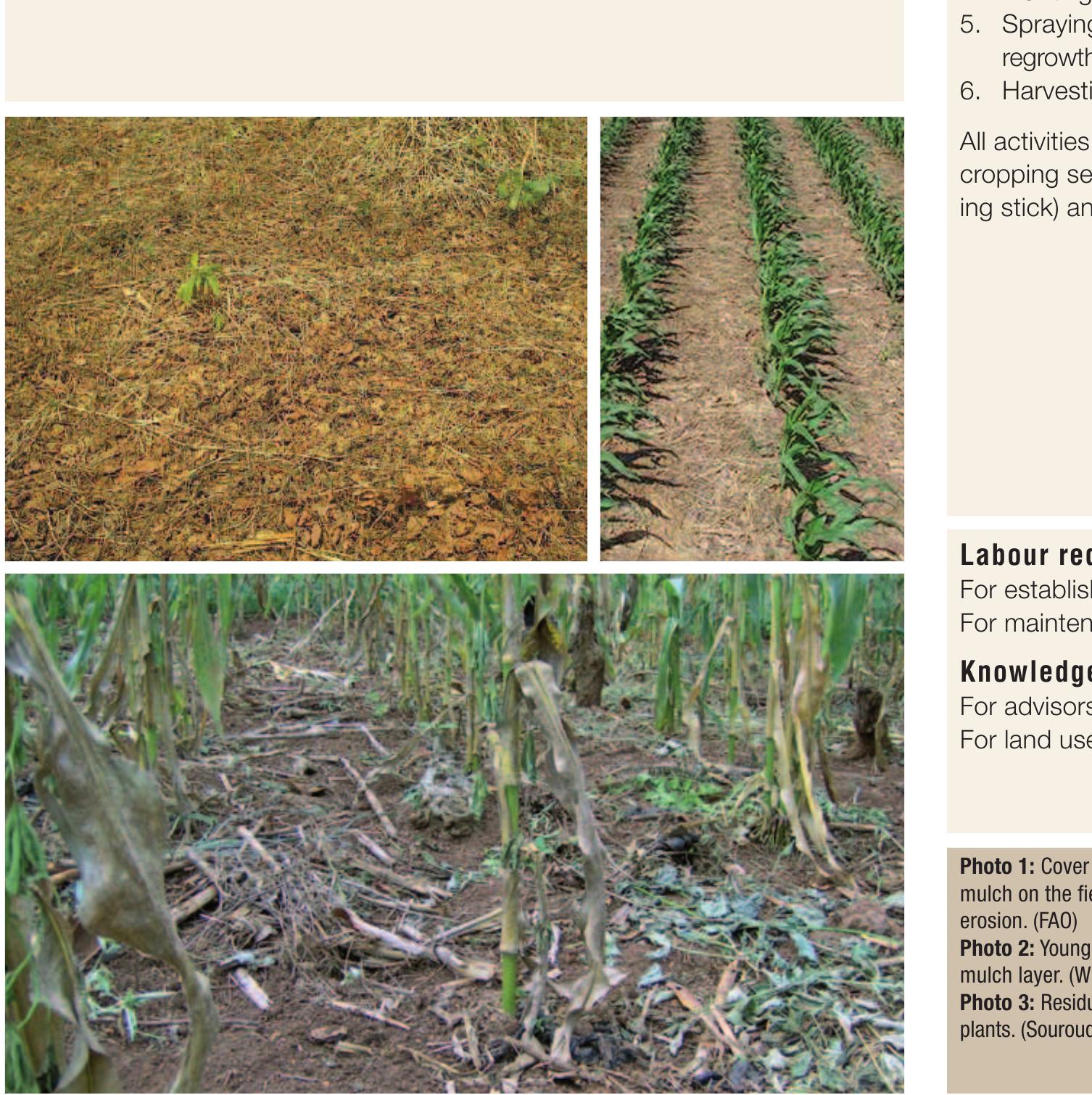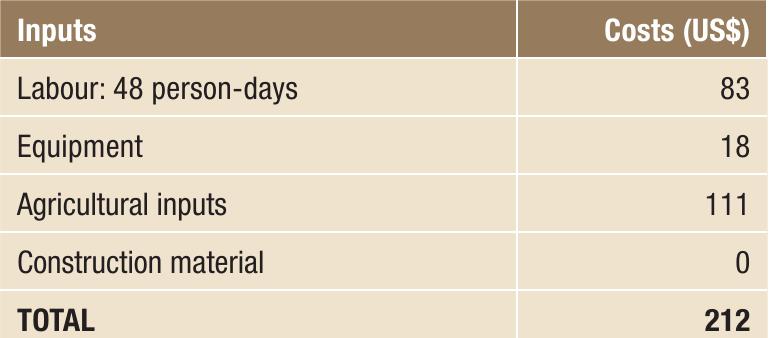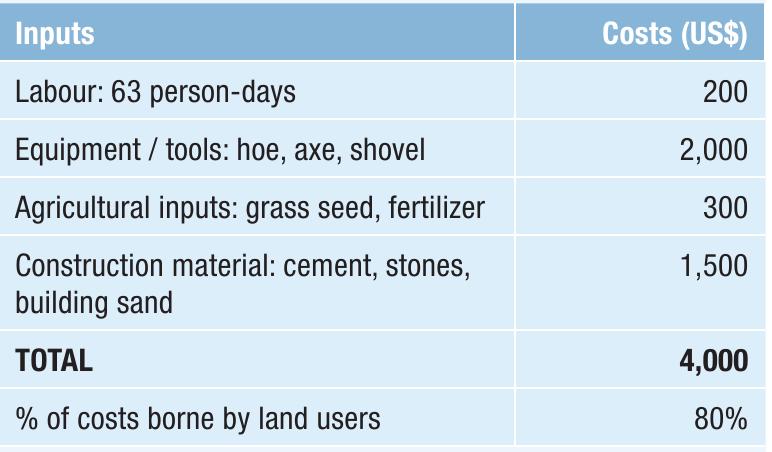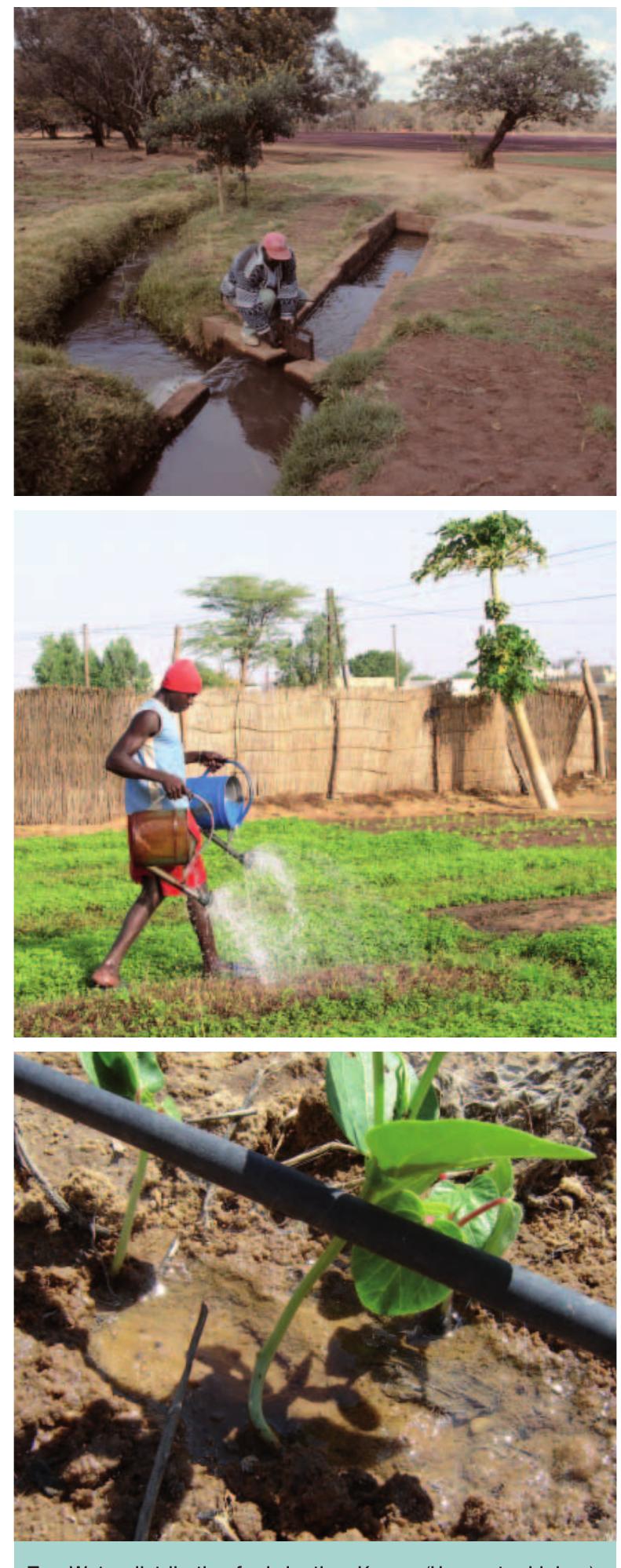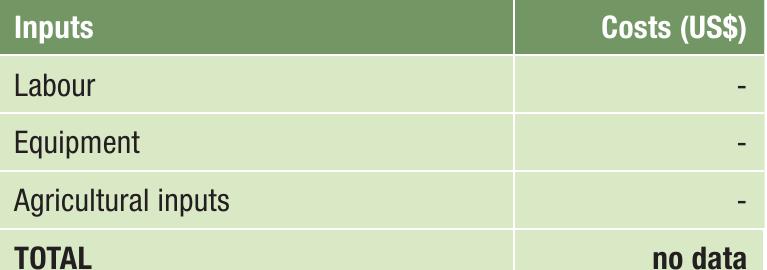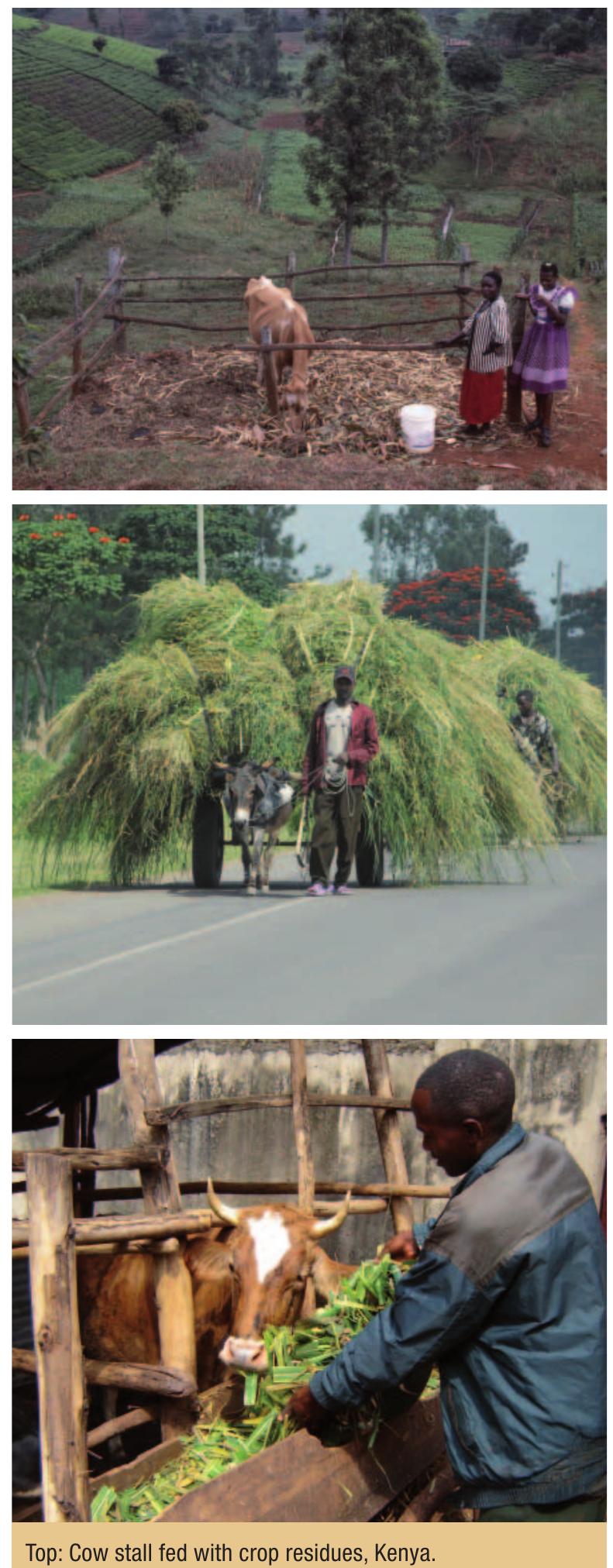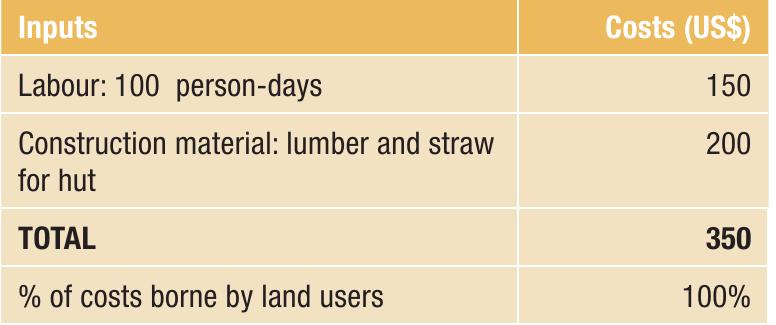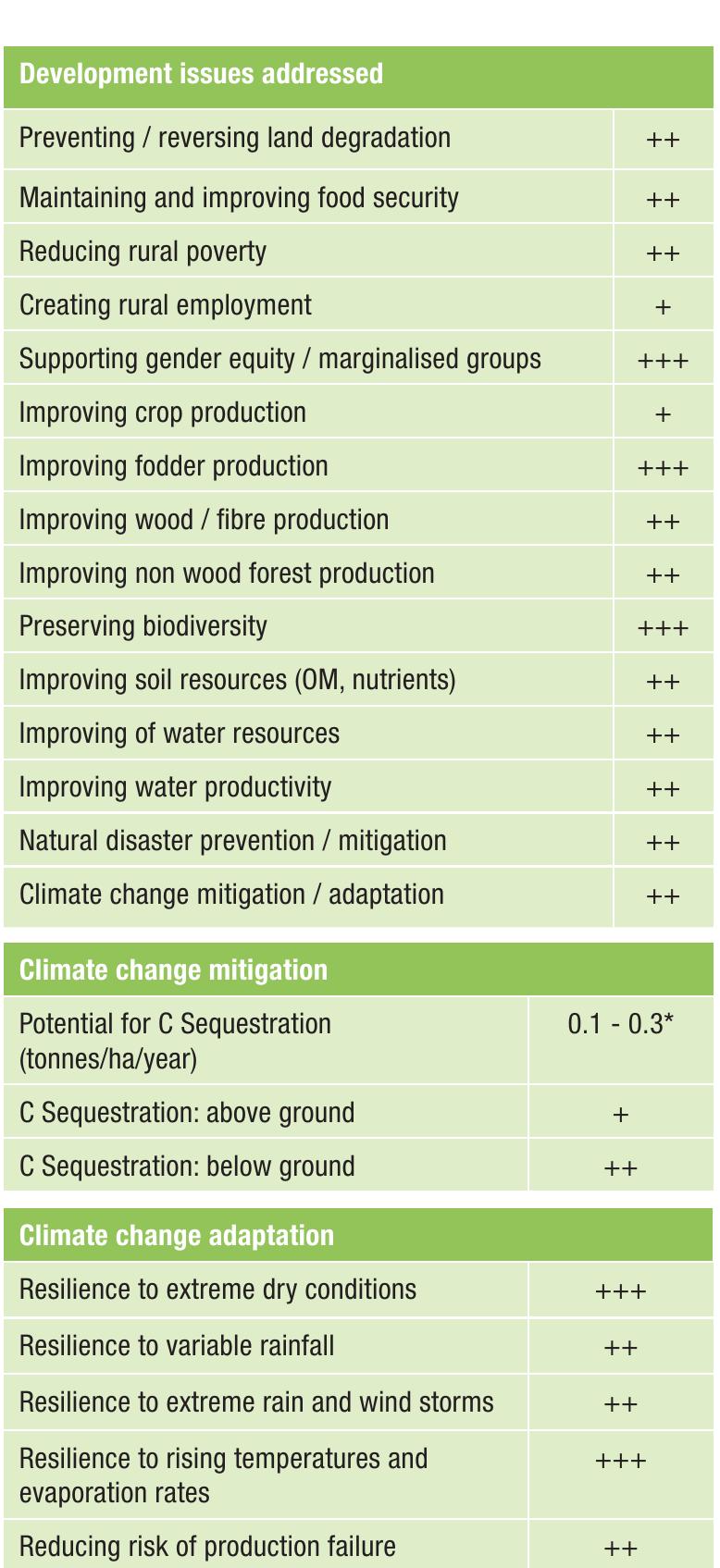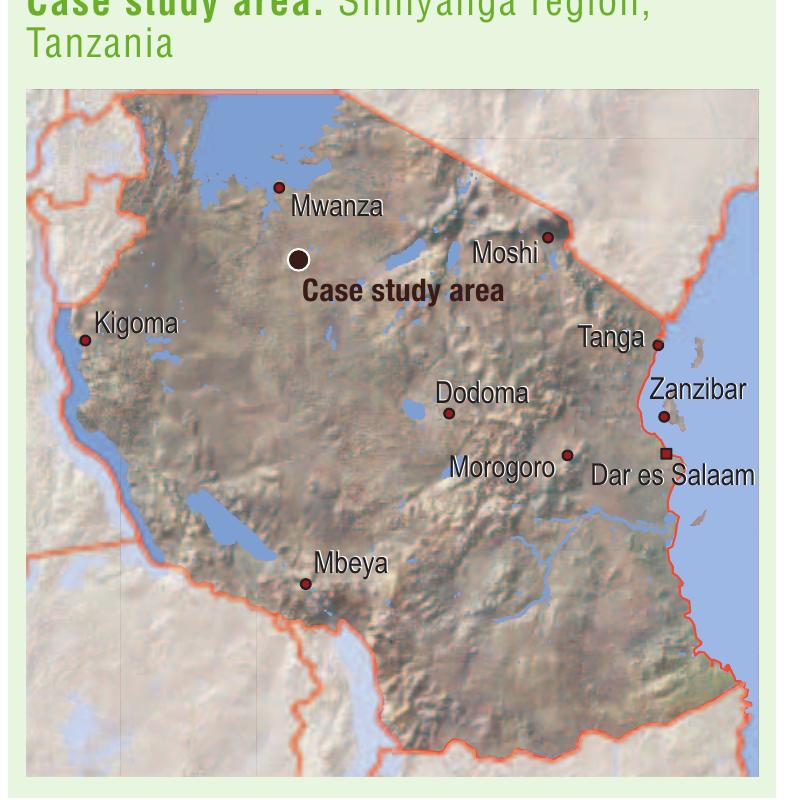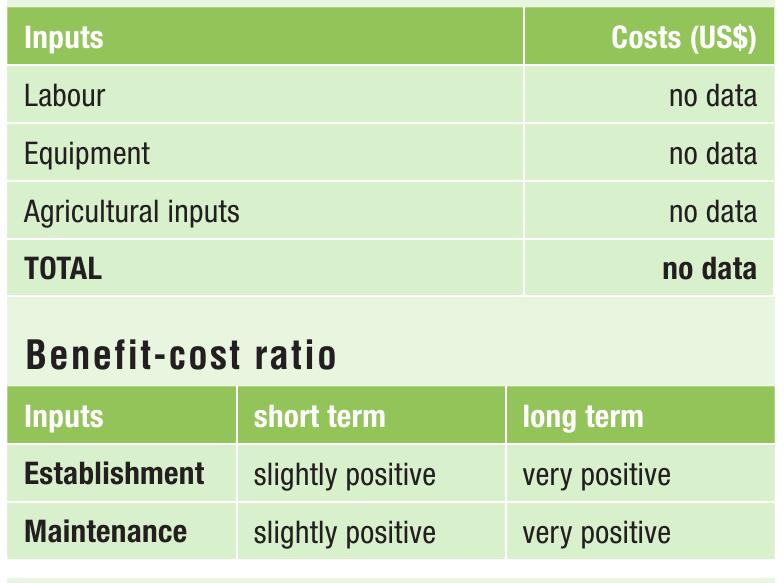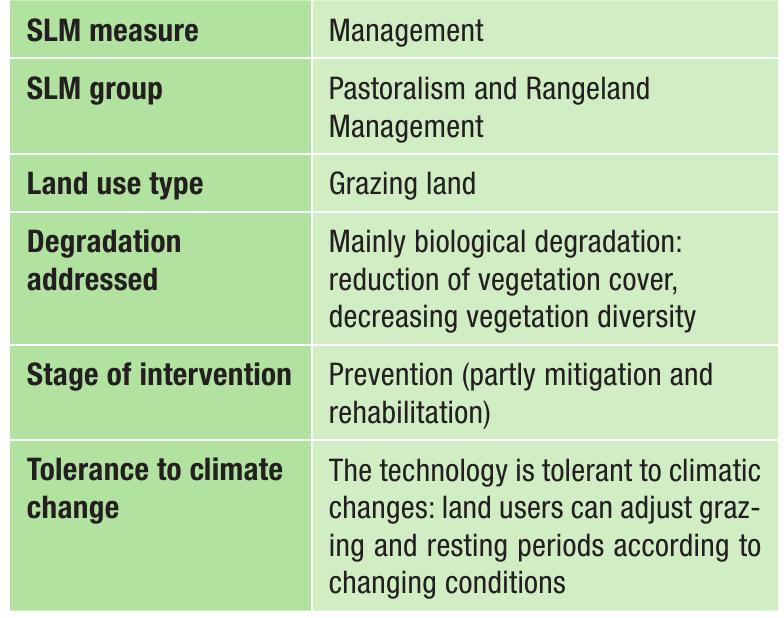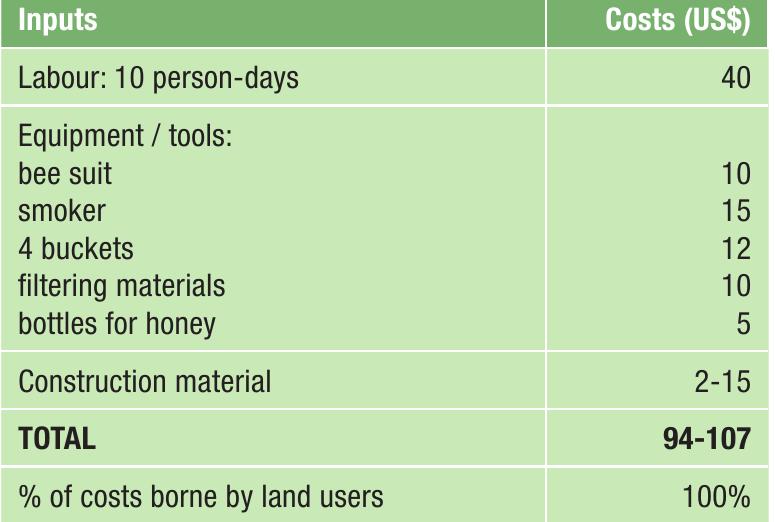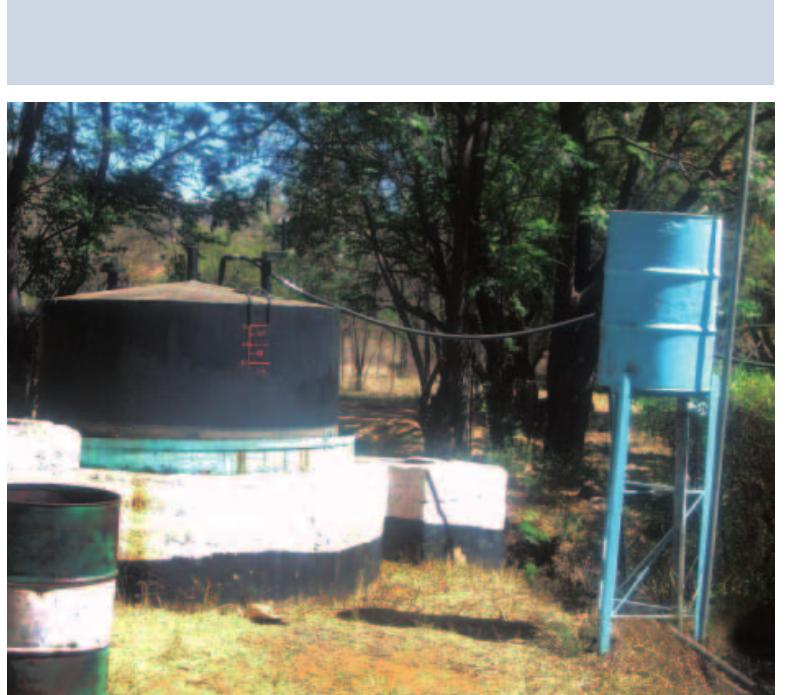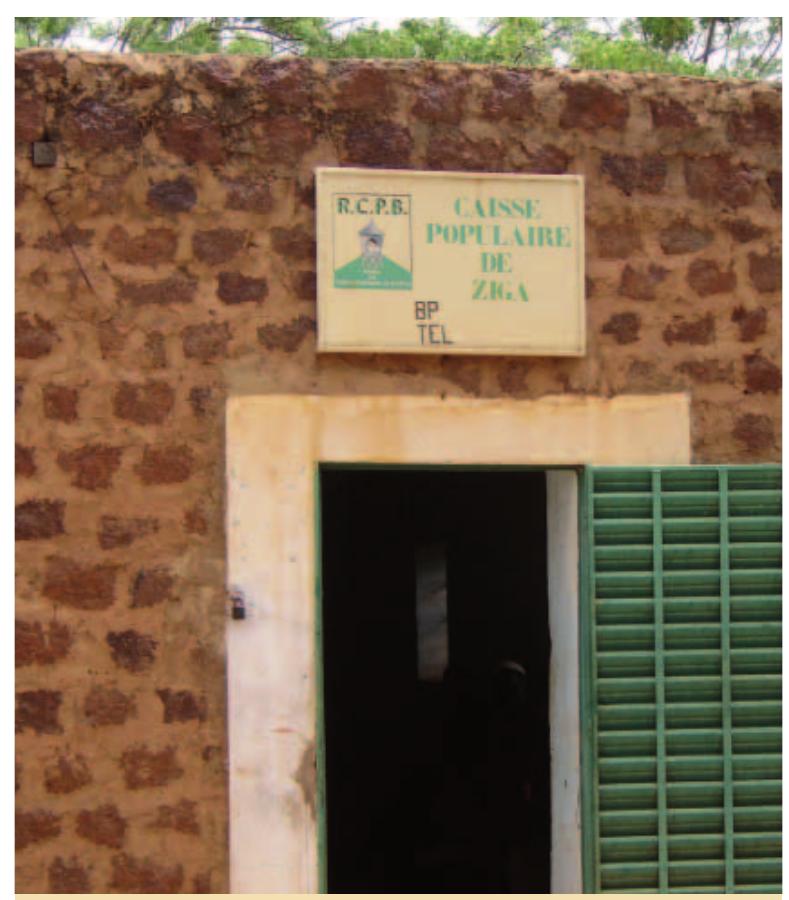Case study. Forest beekeeping – Cameroon
https://doi.org/10.13140/2.1.5108.8960Abstract
Land is the true of wealth of Sub-Saharan Africa (SSA). The region is characterized by a very rich diversity of natural ecosystem resources, including soils, vegetation, water and genetic diversity. Together, these constitute the region’s main natural capital. It is from these assets that the provision of food, water, wood, fibre and industrial products, and essential ecosystem services and functions are derived. And they must be maintained in order to support African populations into the future. Simultaneously, it is from the land that 60 percent of the people directly derive their livelihoods - from agriculture, freshwater fisheries, forestry and other natural resources (FAO 2004). However, African land and water resources in some areas are seriously threatened through overuse although per capita availability is one of the highest in the world. This is a direct result of the increasing needs of a growing population, combined, often, with inappropriate land management practices. Th...
Key takeaways
AI
AI
- Sustainable Land Management (SLM) is crucial for addressing land degradation in Sub-Saharan Africa (SSA).
- The region's population growth exceeds 2% annually, necessitating a doubling of food production by 2030.
- SLM practices must be adaptable to local conditions, integrating traditional knowledge and innovative techniques.
- The text outlines 13 major SLM technologies and 47 case studies to guide implementation across SSA.
- Improved water management and soil fertility are foundational to enhancing agricultural productivity and resilience.
References (196)
- Baudeon F., H.M. Mwanza, B. Triomphe, M. Bwalya. 2007. Conservation agriculture in Zambia: a case study of Southern Province. Nairobi. African Conservation Tillage Network, Centre de Coopération Internationale de Recherche Agronomique pour le Développement, Food and Agriculture Organization of the United Nations.
- Baudron F., H.M. Mwanza, B. Triomphe, M. Bwalya and D. Gumbo. 2006. Challenges for the adoption of Conservation Agriculture by smallholders in semi-arid Zambia. Online: www.relma.org.
- Boahen P, B.A. Dartey, G.D. Dogbe, E. A. Boadi, B. Triomphe, S. Daamgard-Larsen, J. Ashburner. 2007. Conservation agriculture as practised in Ghana. Nairobi. African Con- servation Tillage Network, Centre de Coopération Internationale de Recherche Agronomique pour le Développement, Food and Agriculture Organization of the United Nations.
- Bwalya, M. and M. Owenya. 2005. Soil and water Conservation to Conservation Agriculture Practices: experiences and lessons from the efforts Eotulelo Farmer Field School -a community based organisation. (http://www.sustainet.org/download/sustainet_publication_eafrica_part2.pdf).
- Derpsch, R. 2008. No-Tillage and Conservation Agriculture: A Progress Report. In: No-Till Farming systems. 2008. Edited by Tom Goddard, Michael A. Zoebisch, Yantai Gan, Wyn Ellis, Alex Watson and Samran Sombatpanit, WASWC, 544 pp.
- Ekboir, J., K. Boa and A.A. Dankyi. 2002. Impacts of No-Till Technologies in Ghana. Mexico D.F. CIMMYT. FAO Aquastat. http://www.fao.org/nr/water/aquastat/data/query/results.html FAO, 2002. Conservation Agriculture: Case studies in Latin America and Africa. Soils Bulletin 78.
- FAO, 2005. Conservation Agriculture in Africa, A. Calegari, J. Ashburner, R. Fowler, Accra, Ghana FAO. 2008. Investing in Sustainable Agricultural Intensification, the role of Conservation Agriculture. Part III -a framework for action. An international technical workshop investing in sustainable crop intensification: The case for improving soil health, FAO, Rome: 22-24 July 2008. Integrated Crop Management Vol. 6-2008.
- Giller, K.E., E. Witter, M. Corbeels and P.Tittonell. 2009. Conservation agriculture and smallholder farming in Africa: The heretic's view. Field Crops Research. GTZ Sustainet. 2006. Sustainable agriculture: A pathway out of poverty for East Africa's rural poor. Examples from Kenya and Tanzania. Deutsche Gesellschaft für Technische Zusammenarbeit, Eschborn.
- Haggblade S., G. Tembo, and C. Donovan. 2004. Household Level Financial Incentives to Adoption of Conservation Agricultural Technologies in Africa. Working paper no. 9. Food security research project. Lusaka, zambia
- Kaumbutho P. and J. Kienzle, eds. 2007. Conservation agriculture as practised in Kenya: two case studies. Nairobi. African Conservation Tillage Network, Centre de Coopération Internationale de Recherche Agronomique pour le Développement, Food and Agriculture Organization of the United Nations.
- Kaumbutho P., J. Kienzle, eds. 2007. Conservation agriculture as practised in Kenya: two case studies. Nairobi. African Conservation Tillage Network, Centre de Coopération Inter- nationale de Recherche Agronomique pour le Développement, Food and Agriculture Organization of the United Nations.
- Mrabet, R. 2002. Stratification of soil aggregation and organic matter under conservation tillage systems in Africa, Soil & Tillage Research 66 (2002) 119-128
- Nyende, P., A. Nyakuni, J.P. Opio, W. Odogola. 2007. Conservation agriculture: a Uganda case study. Nairobi. African Conservation Tillage Network, Centre de coopération Inter- nationale de Recherche Agronomique pour le Développement, Food and Agriculture Organization of the United Nations.
- RELMA. 2007.Wetting Africa's appetite. Conservation agriculture is turning rainfall into higher crop yields and catching on. RELMA Review Series No. 3. ICRAF, Nairobi.
- Rockström, J., P. Kaumbutho, J. Mwalley, A. W. Nzabi, M. Temesgen, L. Mawenya, J. Barron, J. Mutua and S Damgaard-Larsen. 2009. Conservation Farming Strategies in East and Southern Africa: Yields and Rainwater Productivity from On-farm Action Research. Soil & Tillage Research 103 (2009) 23-32.
- Shetto R., M. Owenya, eds. 2007. Conservation agriculture as practised in Tanzania: three case studies. Nairobi. African Conservation Tillage Network, Centre de Coopération Internationale de Recherche Agronomique pour le Développement, Food and Agriculture Organization of the United Nations.
- West T.O. and W.M. Post. 2002. Soil organic carbon sequestration rates by tillage and crop rotation. A global data analysis. Soil Science Society of America Journal, 66. Available from: http://soil.scijournals.org/cgi/content/abstract/66/6/1930?etoc WOCAT, 2009. WOCAT databases on SLM technologies and SLM approaches. www.wocat.net, accessed on 15 September 2009
- Woodfine, A. 2009. Using sustainable land management practices to adapt to and mitigate climate change in Sub-Saharan Africa: resource guide version 1.0. TerrAfrica. www. terrafrica.org References and supporting information (continued): GTZ. 2006. Financing Small-scale Irrigation in Sub-Saharan Africa. Grimm J., M. Richter. Volume 1: Desk Study, December 2006. Deutsche Gesellschaft für Technische Zusam- menarbeit (GTZ) GmbH, Commissioned by The World Bank . IWMI. 2007. Recognising Informal Irrigation in Urban and Peri-Urban West Africa. Water Policy Briefing, Issue 26.
- Pretty, J. N., A. D. Noble, D. Bossio, J. Dixon, R. E. Hine, F. W. T. Penning de Vries, and J. I. L. 2006. Resource-conserving Agriculture Increases Yields in Developing Countries. Environmental Science & Technology, Vol. 40, No. 4.
- Kulecho,I.K. and K. Weatherhead. 2008. Issues of irrigation of horticultural crops by smallholder farmers in Kenya. Irrig Drainage Syst (2006) 20:259-266
- Mati, B. M. 2005. Overview of water and soil nutrient management under smallholder rainfed agriculture in East Africa. Working Paper 105. Colombo, Sri Lanka: International Water Management Institute (IWMI).
- Mati, B. M. 2008. Capacity Development for Smallholder Irrigation in Kenya. IRRIGATION AND DRAINAGE. Irrig. and Drain. 57: 332-340 (2008)
- Postel, S., P. Polak, F. Gonzales, and J. Keller. 2001. Drip Irrigation for Small Farmers -A New Initiative to Alleviate Hunger and Poverty. International Water Resources Association. Water International, Volume 26, Number 1, Pages 3-13, March 2001
- Woltering, L., D. Pasternak, and J. Ndjeunga. 2009. The African Market Garden: Development of an Integrated Horticultural Production System for Smallholder Producers in West Africa. Submitted to Irrigation and Drainage. References and supporting information:
- Alemayehu M., F. Yohannes, and P. Dubale. 2006. Effect of Indigenous Stone Bunding (KAB) on Crop Yield at Mesobit-Gedeba, North Shoa, Ethiopia. Land Degrad. Develop. 17: 45-54 (2006).
- Amsalu, A. and J. de Graaff. 2007. Determinants of adoption and continued use of stone terraces for soil and water conservation in an Ethiopian highland watershed. Ecological Economics, 61 (2007) 294-302.
- Bodnar, F. 2005. Monitoring for impact: evaluating 20 years of soil and water conservation in southern Mali.
- IWMI. 2009. http://www.iwmi.cgiar.org/africa/west/projects/Adoption%20Technology/Soil&WaterConservation/56-ImprovedStoneTerracing.htm, accessed on 15 September 2009. IWMI. 2009. http://www.iwmi.cgiar.org/africa/west/projects/Adoption%20Technology/RainWaterHarvesting/50-Fanya%20juu.htm, accessed on 15 September 2009.
- Kempkes, M. 1994. Analyse financière des cordons pierreux: cas d'étude de Tagalla, province du Sanmatenga au Burkina Faso; rapport des étudiants 44a Antenne Sahélienne, Ouagadougou.
- Mati B. M. 2005. Overview of water and soil nutrient management under smallholder rainfed agriculture in East Africa. Working Paper 105. Colombo, Sri Lanka: International Water Management Institute (IWMI).
- Mwangi J.N., T.O. Mboya and Kihumba. 2001. Improved Maize Production in Central Kenya with Adoption of Soil and Water Conservation Measures. Seventh Eastern and Southern Africa Regional Maize Conference, 11th-15th February, 2001. pp. 299-300.
- Spaan, W.P. 2003. Consuming the savings: water conservation in a vegetative barrier system at the Central Plateau in Burkina Faso., Wageningen University and Research Centre, Wageningen.
- Tenge, A.J., J. De Graaff, J.P. Hella. 2005. Financial efficiency of major soil and water conservation measures in West Usambara highlands, Tanzania. Applied Geography 25, 348- 366. UNEP. 1998. Sourcebook of Alternative Technologies for Freshwater Augumentation in Africa. Newsletter and Technical Publications.http://www.unep.or.jp/ietc/Publications/Tech- Publications/TechPub-8a/fanya.asp, accessed on 28.10.2009.
- WOCAT. 2009. WOCAT databases on SLM technologies and SLM approaches. www.wocat.net, accessed on 15 September 2009. References and supporting information: Bekele-Tesemma, A. (ed). 2007. Profitable agroforestry innovations for eastern Africa: experience from 10 agroclimatic zones of Ethiopia, India, Kenya, Tanzania and Uganda. World Agroforestry Centre (ICRAF), Eastern Africa Region.
- Boffa, J. M. 1999. Agroforestry parklands in sub-Saharan Africa. Conservation Guide 34. FAO. http://www.fao.org/docrep/005/x3940e/X3940E10.htm#ch7.4
- Chirwa, P.W. 2003. Tree and crop productivity in Gliricidia/Maize/Pigeonpea cropping systems in southern Malawi, Ph.D dissertation, University of Nottingham. Critchley, W. forthcoming. More People, More Trees. Practical Action Publications.
- FAO. 2005. Realising the economic benefits of agroforestry: experiences, lessons and challenges. State Of The World's Forests, P. 88-97.
- Franzel S. and C. Wambugu. 2007. The Uptake of Fodder Shrubs among Smallholders in East Africa: Key Elements that Facilitate Widespread Adoption. In Hare, M.D. and K. Wongpichet (eds). 2007. Forages: A pathway to prosperity for smallholder farmers. Proceedings of an International Symposium, Faculty of Agriculture, Ubon Ratchathani Uni- versity, Thailand, 203-222.
- Leakey, R.R.B., Z. Tchoundjeu, K. Schreckenberg, S. Shackleton and C. Shackleton. 2005. Agroforestry Tree Products (AFTPs): Targeting Poverty Reduction and Enhanced Liveli- hoods. International Journal of Agricultural Sustainability 3: 1-23.
- Nair, P. K. R B., M. Kumar and V.D. Nair. 2009. Agroforestry as a strategy for carbon sequestration. J. Plant Nutr. Soil Sci. 2009, 172, 10-23.
- Sinclair, F. L. 1999. A general classification of agroforestry practice. Agroforestry Systems 46: 161-180.
- Sood, K. K. and C. P. Mitchell. 2009. Identifying important biophysical and social determinants of on-farm tree growing in subsistence-based traditional agroforestry systems Agro- forest Syst (2009) 75:175-187.
- Verchot, L. V., M. Van Noordwijk, S. Kandji, T. Tomich, C. Ong, A. Albrecht, J. Mackensen, C. Bantilan, K. V. Anupama and C. Palm. 2007. Climate change: linking adaptation and mitigation through agroforestry. Mitig Adapt Strat Glob Change 12: 901-918.
- WOCAT, 2009. WOCAT database on SLM technologies and SLM approaches. www.wocat.net, accessed on 15 September 2009.
- Woodfine, A. 2009. Using sustainable land management practices to adapt to and mitigate climate change in sub-Saharan Africa: resource guide version 1.0. TerrAfrica. www. terrafrica.org Zomer, R., A. Trabucco, R. Coe and F. Place. 2009. Trees on Farm: Analysis of Global Extent and Geographical Patterns of Agroforestry. ICRAF Working Paper no. 89. Nairobi, Kenya: World Agroforestry Centre. 60pp. References and supporting information : FAO. 2009. Grasslands: enabling their potential to contribute to greenhouse gas mitigation. A submission by The Food and Agriculture Organisation of the United Nations1. Work- shop held at FAO Rome 15 -17 April 2009.
- FAO. 2007. TerrAfrica-A Vision paper for Sustainable Land Management in Sub-Saharan Africa. Food and Agriculture Organisation of the United Nations, Rome, Italy. FAO. 2001. Mixed crop-livestock farming-a review of traditional technologies based on literature and field experience. FAO, Animal production and health papers 152 (http://www. fao.org/DOCREP/004/Y0501E/Y0501E00.HTM)
- Gebremedhin, B., J. Pender, and T. Girmay. 2004. Collective action for grazing land management in crop-livestock mixed systems in the highlands of northern Ethiopia. Agricultural Systems 82 (2004) 272-290.
- IFAD. 2009. Integrated-Livestock Farming Systems. Thematic paper 12-13 January 2009
- Lenné, J. and D. Thomas. 2006. Integrating crop-livestock R & D in sub-Saharan Africa: option, imperative or impossible? Outlook on Agriculture, Volume 35, Number 3, pp. 167- 175(9)
- Liniger, H.P. and D.B. Thomas 1998: GRASS: Ground cover for the Restoration of the Arid and Semi-arid Soils. In: Advances in GeoEcology 31, 1167-1178, CATENA Verlag, Reiskirchen.
- Ogle, B. 1996. Livestock Systems in Semi-Arid Sub-Saharan Africa, Integrated Farming in Human Development -Workshop Proceedings
- Otte J. and V. Knips. 2005. Livestock Development for Sub-Saharan Africa. PPLPI Research Report Nr. 05-09. Food and Agriculture Organisation of the United Nations, Rome, Italy Pell, A.N. 1999. Integrated crop-livestock management systems in sub Saharan Africa. Environment, Development and Sustainability 1: 337-348.
- Powell, J. M., R. A. Pearson, and P. H. Hiernaux. 2004. Crop-Livestock Interactions in the West African Drylands. Agron. J. 96:469-483.
- Van Keulen, H. and H. Schiere. 2004. Crop-Livestock Systems: Old Wine in New Bottles? In New Directions for a Diverse Planet. Proceedings of the 4th International Crop Science Congress, Brisbane, Australia, 26 September-October 2004. http://www.cropscience.org.au/icsc2004/symposia/2/1/211_vankeulenh.htm WOCAT, 2009. WOCAT database on SLM technologies and SLM approaches. www.wocat.net, accessed on 15 September 2009
- Woodfine, A. 2009. Using sustainable land management practices to adapt to and mitigate climate change in Sub-Saharan Africa: resource guide version 1.0. TerrAfrica. www. terrafrica.org. References and supporting information: Briske D. D., J. D. Derner, J. R. Brown, S. D. Fuhlendorf, W. R. Teague, K. M. Havstad, R. L. Gillen, A. J. Ash, and W. D. Willm. 2008. Rotational Grazing on Rangelands: Reconciliation of Perception and Experimental Evidence. Rangeland Ecol Manage 61:3-17.
- Cecchi, G., W. Wint, A. Shaw, A. Marletta, R. Mattioli and T. Robinson. 2010. Geographic distribution and environmental characterisation of livestock production systems in Eastern Africa. Agriculture, Ecosystems and Environment 135 (2010) 98-110.
- Davies, J., M. Niamir-Fuller, K. Kerven and K. Bauer. 2010. Extensive livestock production in transition: the future of sustainable pastoralism. In Livestock in a Changing Landscape, Volume 1, Drivers, Consequences, and Responses. Steinfeld, H., H. A. Mooney, F. Schneider and L. E. Neville (eds). Washington, DC: Island Press.
- Davies, J. 2008. Turning the tide: Enabling sustainable development for Africa's mobile pastoralists Natural Resources Forum 32 (2008) 175-184.
- Derry, J.F. and R.B. Boone. 2010. Grazing systems are a result of equilibrium and non-equilibrium dynamics. Journal of Arid Environments 74( 2): 307-309.
- FAO, 2009. Grasslands: Enabling their potential to contribute to greenhouse gas mitigation. A submission by The Food and Agriculture Organisation of the United Nations1. workshop held at FAO Rome 15 -17 April 2009.
- FAO. 2004. Carbon Sequestration in drylands soils. World Soil Resources Reports 102. FAO. FAO. 2001. Pastoralism in the new millennium. Animal Production And Health Paper 150. FAO.
- Gebremedhina, B., J. Pender and G. Tesfay. 2004. Collective action for grazing land management in crop-livestock mixed systems in the highlands of northern Ethiopia. Agricultural Systems Volume 82, Issue 3 pp 273-290.
- Hatfield, R. and J. Davies. 2006. Global Review of the Economics of Pastoralism. The World Initiative for Sustainable Pastoralism, IUCN, Nairobi Homann, S., B. Rischkowsky, J. Steinbach and M. Kirk. 2005. Towards endogenous development: Borana pastoralists' response to environmental and institutional changes. Deutscher Tropen tag. Stuttgart-Hohenheim, October 11-13, 2005.
- Oba, G., N.C. Stenseth and W.J. Lusigi. 2000. New perspectives on sustainable grazing management in arid zones of SSA. BioScience, Volume 50: pp 35 -51.
- Ogle, B. 1996. Livestock Systems in Semi-Arid Sub-Saharan Africa, Integrated Farming in Human Development -Workshop Proceedings. http://www.ardaf.org/NR/rdonlyres/E0E2790E-F1FF-4F65-818E-1716735E1070/0/199618BrianOgle.pdf References and supporting information: Arborvitae. 2006. Forest plantations: the good, the bad and the ugly. The IUCN/WWF Forest Conservation Newsletter. September 2006. Vol.31.
- Chamshama, S.A.O. and F.O.C. Nwonwu. 2004. Forests Plantations in Sub-Saharan Africa -A short report prepared for the project 'Lessons Learnt on Sustainable Forest Management in Africa.
- Chamshama S.A.O., F.O.C. Nwonwu, B. Lundgren and G.S. Kowero. 2009. Plantation Forestry in Sub Saharan Africa: Silvicultural, Ecological and Economic Aspects. Discov. Innov., 2009; 21 (SFM Special Edition No.
- CIFOR. 1998. Centre for International Forestry Research. CIFOR Annual Report 1998. http://www.cifor.cgiar.org/publications/Html/AR-98/Plantation.html, accessed on 17 November 2009.
- Cossalter, C. and C. Pye-Smith. 2003. Fast-wood forestry: Myths and realities. CIFOR, Jarkata, Indonesia. 50 p.
- Ekisa G.T. 2009. Community Participation in Afforestation and Agroforestry Programmes in Kenya: The influence of biophysical environmental in the case of Teso District. FAO, 2001. Mean annual volume increment of selected industrial forest plantation species. Luis Ugalde and Osvaldo Pérez. Working Paper FP/1, FAO Rome (Italy) FAO. 2002. Hardwood plantations in Ghana. F. Odoom. June 2002. Working Papert FP/24.
- FAO. 2003. Forestry Outlook Study for Africa -Subregional Report West Africa. African Development Bank, European Commission. FAO. 2003. Forestry Outlook Study for Africa. African Development Bank, European Commission. FAO. 2004. Carbon sequestration in dryland soils. World Soil Resources Reports, No. 102, Rome, Italy.
- FAO. 2006. Responsible management of planted forests: voluntary guidelines. Planted Forests and Trees Working Paper FP37E, Rome, Italy FAO. 2006. Global planted forests thematic study: results and analysis, by A. Del Lungo, J. Ball and J. Carle. Planted Forests and Trees Working Paper 38. Rome. FAO. 2009. Planted Forests. http://www.fao.org/forestry/plantedforests/en/ accessed on 22 September 2009. FAO. 2010. Forestry Photos. http://www.fao.org/mediabase/forestry/, accessed on 6 June 2010.
- GTZ. 2009. Running dry? Climate change in drylands and how to cope with it. Deutsche Gesellschaft für Technische Zusammenarbeit (GTZ), GmbH. Oekom Verlag, München Kanowsky P. and H. Murray, 2008. Intensively Managed Planted Forests -Toward best practice. Summary and Recommendations from TFD's IMPF Initiative June 2005 - June 2008. The Forests Dialogue. TFD Publication Number 1 2008.
- Nawir, A.A., H. Kassa, M. Sandewall, D. Dore, B. Campbell, B. Ohlsson and M. Bekele. 2007. Stimulating smallholder tree planting -lessons from Africa and Asia, Unasylva 228, Vol. 58. References and supporting information: Blay, D., 2007. Multi-stakeholder forest management: A case from the humid zone in Ghana. Forest Management Working PaperWorking Paper FM/32. FAO, Rome (Italy). CIFOR. 2006. African Dry Forest Website. http://www.cifor.cgiar.org/dryforest/_ref/home/index.htm, accessed on 15 February, 2010. CIFOR. 2006. Map of Location. http://www.cifor.cgiar.org/dryforest/_ref/home/map.htm, accessed on 17 May 2010. CIFOR. 2006. Miombo Woodland -Policies and Incentives. http://www.cifor.cgiar.org/miombo/project.htm, accessed on 23 September 2009 CIFOR. 2008. Poverty Environment Network -A comprehensive global analysis of tropical forests and poverty. http://www.cifor.cgiar.org/pen/_ref/news/penews/2010/ penews-1-2010.htm#burkina, accessed on 17 Mai 2010.
- CIFOR. 2009. CIFOR annual report 2008: Thinking beyond the canopy (2009).
- FAO. 1997. R. Bellefontaine, A. Gaston and Y. Petrucci (online 2000), Management of natural forests in dry-tropical zones. Series title: FAO Conservation Guide -32. http://www.fao. org/docrep/005/w4442e/w4442e00.htm#Contents FAO. 2003. Forestry Outlook Study for Africa -Subregional Report West Africa. African Development Bank, European Commission. FAO. 2003. Forestry Outlook Study for Africa. African Development Bank, European Commission.
- FAO. 2006. Fire management -global assessment 2006 A thematic study prepared in the framework of the Global Forest Resources Assessment 2005, Series title: FAO Forestry Paper-151. References and supporting information (continued): FAO. 2008. Towards sustainable forest management. http://www.fao.org/forestry/sfm/en/ accessed on 23 September 2009.
- FAO. 2008. Understanding forest tenure in Africa: opportunities and challenges for forest tenure diversification. Forestry Policy and Institutions Working Paper 19 FAO. 2010. Guidelines on sustainable forest management in drylands of Sub-Saharan Africa. 17th AFWC Session, revised draft version. (final document under publication in June 2010) FAO. 2008. Links between National Forest Programmes and Poverty Reduction Strategies, by R.McConnell. FAO. 2010. Forestry Photos. http://www.fao.org/mediabase/forestry/, accessed on 6 June 2010.
- FARMAFRICA. 2009. Tanzania Participatory Forest Management Project. http://www.farmafrica.org.uk/smartweb/tanzania/tanzania-participatory-forest-management-project accessed on 23 September 2009 Forestry Policy and Institutions Working Paper No. 22. Rome.
- German L.A. (ed.), Karsenty, A. (ed.), Tiani A.M., (ed.). 2009. Governing Africa's forests in a globalised world. Earthscan Publications. London.
- Mogaka, H., Simons, G., Turpie, J., Emerton, L. and Karanja, F. 2001. Economic Aspects of Community Involvement in Sustainable Forest Management in Eastern and Southern Africa. IUCN -The World Conservation Union, Eastern Africa Regional Office, Nairobi.
- NGARA. 2010. Network for Natural Gums and Resins in Africa (NGARA), http://www.ngara.org/index.htm, accessed on 18 March 2010.
- Odera, J. 2004. Lessons Learnt on Community Forest Management in Africa. A report prepared for the project 'Lessons Learnt on Sustainble Forest Management in Africa.' TECA-FAO. 2010. Technology for Agriculture -proven technologies for smallholders. http://www.fao.org/teca/content/replacing-need-labour-intensive-traditional-methods-mechani- cal-press-making-shea-butter-nort, accessed on 25 March 2010.
- WFSE, 2009. Making Sub-Saharan African Forests work for People and Nature -Policy approaches in a changing global environment. Published by Special Project on World Forests, Society and Environment (WFSE) of the International Union of Forest Research Organisations (IUFRO), World Agroforestry Centre (ICRAF), the Center for International Forestry Research (CIFOR) and the Finish Forest Research Institute (METLA). References and supporting information: Blay, D. 2007. Multi-stakeholder forest management: A case from the humid zone in Ghana. Forest Management Working PaperWorking Paper FM/32. FAO, Rome (Italy). Central African Regional Program for the Environment (CARPE), 2010. http://carpe.umd.edu/, accessed on 15 February 2010.
- Eba'a Atyi R., Devers D., de Wasseige, C and Maisels F. 2009. State of the forests of Central Africa: Sub-regional synthesis. In Dewasseige, C., Devers D., de Marcken P., Eba'a Atyi R., Nasi R. et Mayaux Ph., (eds) The forest of the Congo Basin: State of the forest 2008. P:127-140. Publications Office of the European Union, Luxembourg.
- FAO. 1997. R. Bellefontaine, A. Gaston and Y. Petrucci (online 2000), Management of natural forests in dry-tropical zones. Series title: FAO Conservation Guide -32.
- FAO. 2003. Forestry Outlook Study for Africa -Subregional Report West Africa. African Development Bank, European Commission. FAO. 2003. Forestry Outlook Study for Africa. African Development Bank, European Commission.
- FAO. 2003. Sustainable management of tropical forests in central Africa. Forestry Paper -143 http://www.fao.org/docrep/006/y4853e/y4853e03.htm#P169_7514 FAO. 2008. Towards sustainable forest management. http://www.fao.org/forestry/sfm/en/ accessed on 23 September 2009.
- FAO. 2008. Understanding forest tenure in Africa: opportunities and challenges for forest tenure diversification. Forestry Policy and Institutions Working Paper 19 FAO. 2009. State of the Worlds Forests 2009. FAO. 2008. Links between National Forest Programmes and Poverty Reduction Strategies, by R.McConnell.
- FARMAFRICA. 2009. Tanzania Participatory Forest Management Project. http://www.farmafrica.org.uk/smartweb/tanzania/tanzania-participatory-forest-management-project. FSC. 2010. Forest Stewardship Council. http://www.fsc.org, accessed on 15 February 2010
- German L.A. (ed.), Karsenty A. (ed.), Tiani A.M. (ed.). 2009. Governing Africa's forests in a globalised world. Earthscan Publications. London.
- ITTO, 2010. International Tropical Timber Organisation. http://www.itto.int/en/feature09/, accessed on 15 February 2010. References and supporting information (continued):
- Karsenty, A., and Gourlet-Fleury, S. 2006. Assessing Sustainability of Logging Practices in the Congo Basin's Managed Forests: the Issue of Commercial Species Recovery. Ecology and Society 11(1): 26. [online] URL: http://www.ecologyandsociety.org/vol11/iss1/art26/
- Lescuyer, G., Eba'a Atyi, R. and Cerutti, P. 2009a. Consommations nationales de bois d'oeuvre en Afrique Centrale: un enjeu majeur pour la gestion forestière durable. Paper presented at the world forestry congress. Buenos Aires, Argentina. 18-23 Octobre 2009.
- Lescuyer, G., Karsenty, A., and Eba'a Atyi R. 2009b. A new tool for sustainable forest management in Central Africa: Payments for Environmental Services. In Dewasseige, C., Devers D., de Marcken P., Eba'a Atyi R., Nasi R. et Mayaux Ph., (eds) The forest of the Congo Basin : State of the forest 2008. P:15-41. Publications Office of the European Union, Luxembourg.
- Mogaka, H., Simons, G., Turpie, J., Emerton, L. and Karanja, F. 2001. Economic Aspects of Community Involvement in Sustainable Forest Management in Eastern and Southern Africa. IUCN -The World Conservation Union, Eastern Africa Regional Office, Nairobi.
- Nasi, R., B. Cassagne, A. Billand. 2006. Forest management in Central Africa: where are we? International Forestry Review 8(1):14-20.
- Nasi, R., J.-C. Nguinguiri, D. Ezzine de Blas (Eds.). 2006. Exploitation et gestion durable des forêts d'Afrique Centrale : la quête de la durabilité. ITTO, CIFOR, CIRAD, L'Harmattan, Paris, 429p.
- Odera, J., 2004. Lessons Learnt on Community Forest Management in Africa. A report prepared for the project 'Lessons Learnt on Sustainble Forest Management in Africa.' Owen, J., 2004. Can Central Africa's Rain Forests Live With Logging? National Geographic. Novemter 2004. Tropical Forest Update. 2009. Owning Africa's forests. A newsletter from the International Tropical Timber Organistion to promote the conservation and sustainable development of tropical forests. Vol.19-2
- Tropical Forests and Climate Change Adaptation (TroFCCA). 2010. http://www.cifor.cgiar.org/trofcca/_ref/home/index.htm, accessed on 15 February 2010. References and supporting information: CIFOR. 2006. Payments for Environmental Services. http://www.cifor.cgiar.org/pes/_ref/about/index.htm, accessed on 15 January, 2010. COFTA. 2010. Cooperation for Fair Trade in Africa. http://www.cofta.org/en/en/index.asp, accessed on 21 June 2010.
- Critchley W., 2010. Sustainable Land Management course presentation: "Biodiversity, GM and Organic Production". VU-University Amsterdam. DESIRE. 2010. DESIRE-Project. http://www.desire-project.eu/ Ethiocat. 2007. Soil and Water Conservation Practices for Sustainable Land Management in Ethiopia.
- Fairtrade Labelling Organizations International & International Fair Trade Association. 2008. A Charter of Fair Trade Principles. http://activistnotes.wordpress.com/2008/06/06/a- draft-charter-of-fair-trade-principles-flo-and-ifat/, accessed on 1 June 2010.
- Falkenmark,M., P. Fox, G. Persson and J. Rockström. 2001. Water Harvesting for Upgrading of Rainfed Agriculture -Problem Analysis and Research Needs. SIWI Report 11. Stockholm International Water Institute.
- FAO. 2003. Workshop on Tropical Secondary Forest Management in Africa: Reality and Perspectives. Proceedings. http://www.fao.org/Docrep/006/J0628e/J0628E30.htm, accessed on 15 January 2010.
- FAO. 2004. The state of food and agriculture 2003-2004: agricultural biotechnology -meeting the needs of the poor? Food and agriculture organization of the United Nations, Rome, Italy. FAO. 2007. The State of Food and Agriculture -Paying Farmers for Environmental Services. FAO Agriculture Series No. 38. FAO. 2010. Organic Agriculture. http://www.fao.org/organicag/oa-home/en/, accessed on 29 March 2010.
- FAO. 2010. Payments for Environmental Services from Agricultural Landscapes http://www.fao.org/ES/esa/pesal/index.html, accessed on 15 January 2010. ISRIC -World Soil Information. 2010. Green Water Credits. http://www.isric.org/UK/About+ISRIC/Projects/Current+Projects/Green+Water+Credits.htm, accessed on 14 June 2010.
- Meleca, A., 2008. The Organic Answer to Climate Change. http://www.organicguide.com/community/education/the-organic-answer-to-climate-change/
- Moges A. and N. M. Holden. 2008. Estimating the rate and Consequences of Gully Development, a Case Study of Umbulo Catchment in Southern Ethiopia. Land Degrad. Develop. 19: 574-586 (2008).
- Müller-Lindenlauf M. 2009. Organic Agriculture and Carbon Sequestration. Possibilities and constrains for the consideration of organic agriculture within carbon accounting systems. FAO. ftp://ftp.fao.org/docrep/fao/012/ak998e/ak998e00.pdf, accessed on 29 March 2010.
- Salami A., B. Abdul Kamara and Z. Brixiova. 2010. Smallholder Agriculture in East Africa: Trends, Constraints and Opportunities, Working Papers Series N° 105 African Develop- ment Bank, Tunis, Tunisia.
- The Katoomba group. 2008. http://www.katoombagroup.org/regions/africa/documents/2009_scoping_report.pdf, accessed on 15 January 2010. UNEP-UNCTAD. 2008. Organic Agriculture and Food Security in Africa. United Nations, New York and Geneva.
- UNESCO. 2005. Teaching and learning for a sustainable future. http://www.unesco.org/education/tlsf/TLSF/theme_c/mod16/uncom16t03.htm, accessed on 15 January. Wikipedia. 2010. Fair trade. http://en.wikipedia.org/wiki/Fair_trade, accessed on 1.June 2010.
- WOCAT. 2007. Where the land is greener -case studies and analysis of soil and water conservation initiatives worldwide. Editors: Hanspeter Liniger and William Critchley. WOCAT. 2009. WOCAT Database on SLM Technologies. www.wocat.net References and supporting information:
- Asiabaka, C. C., 2002. Promoting sustainable extension approaches: Farmer field school (FFS) and its role in sustainable agricultural development in Africa. Int. J. of Agri. and Rural Dev.; 3(46-53).
- Bass, S., S. J. Scherr, Y. Renard, S. Shames. 2009. New Directions for Integrating Environment and Development in East Africa: Key Findings from Consultations with Stakeholders in Ethiopia, Kenya, Tanzania, and Uganda. Ecoagriculture Discussion Paper no. 3. Washington, D.C., Ecoagriculture Partners.
- Baumann, P., M. Bruno, D. Cleary, O. Dubois and X. Flores. 2004. Applying people centred development approaches within FAO -Some practical lessons. LSP Working Paper 15. FAO.
- Curtis, M., 2007. Deadly Combination: The Role of Southern Governments and the World Bank in the Rise of Hunger. Understanding the Issue (2/2007). Critchley, W., 2007. Working with Farmer Innovators. CTA.
- DANIDA., 2007. Community-based natural resource management. Technical Note. http://www.danidadevforum.um.dk/en/servicemenu/News/CommunityBasedNaturalManage- ment.htm Eicher, C. K., 2007. Agricultural extension in Africa and Asia. Staff Papers 7431, Michigan State University, Department of Agricultural, Food, and Resource Economics. FAO. 2008. Farmer field schools on land and water management in Africa. Proceedings of an international workshop in Jinja, Uganda. 24-29 April, 2006.
- Gonsalves, J., T. Becker, A. Braun, D. Campilan, H. De Chavez, E. Fajber, M. Kapiriri, J. Rivaca-Caminade and R. Vernooy (eds). 2005. Participatory Research and Development for Sustainable Agriculture and Natural Resource Management: A Sourcebook. Volume 1: Understanding Participatory Research and Development. International Potato Center -Users' Perspectives with Agricultural Research and Development, Laguna, Philippines and International Development Research Centre, Ottawa, Canada.
- Hatcher, J., 2008. Dialogue, consensus and vision -PNTD more than a methodology: a strategy for territorial interaction and integration (edited by P. Groppo, FAO). Land and Water Division, FAO.
- Hurni, H., 1996. Precious Earth -From soil and water conservation to sustainable land management. Geographica Bernensia. Liniger, H.,1995. Endagered water, a global overview of degradation, conflicts and strategies for improvement. CDE.
- Pretty, J., 2001. Compendium of Land and SARD Cases: Supporting Document to Task Managers' Report to CSD+10 on the Land and Agriculture Cluster for Chapters 10, 12 and 14 of Agenda 21. Compendium of Land and SARD Cases: April 2001.
- Shiferaw, B. A., J. Okello and R. V. Reddy. 2009. Adoption and adaptation of natural resource management innovations in smallholder agriculture: reflections on key lessons and best practices. Environ Dev Sustain (2009) 11:601-619.
- WOCAT. 2007. Where the land is greener-case studies and analysis of soil and water conservation initiatives worldwide. Editors: Hanspeter Liniger and William Critchley. WOCAT. 2008. A Framework for documentation and evaluation of sustainable land management Approaches -basic. WOCAT questionnaire.
- AfDB, UNECA and OECD. 2009. African Economic Outlook 2008/09. Paris and Tunis: AfDB and OECD. Alliance for a Green Revolution in Africa (AGRA). 2010. Statement from chairman: Africa's breadbas- kets: key to achieving food security. http://www.agra-alliance.org/section/news/chairman_speech/;
- Aune, J. B. and A. Bationo. 2008. Agricultural intensification in the Sahel: the ladder approach. Agricul- tural Systems 98: 119-125.
- Bonkoungou, E.G. 2001. Biodiversity in the drylands: Challenges and opportunities for conservation and sustainable use. Challenge Paper. The Global Drylands Initiative, UNDP Drylands Development Centre, Nairobi, Kenya.
- Bot, A. and J. Benites. 2005. The importance of soil organic matter: key to drought-resistant soil and sustained food production. FAO soils bulletin 80. FAO, Rome, Italy.
- Castillo, G. E., R. E. Namara, H. M. Ravnborg, M. A. Hanjra, L. Smith, M. H. Hussein, C. Béné, S. Cook, D. Hirsch, P. Polak, D. Vallée and B. van Koppen. 2007. Reversing the flow: agricultural water management pathways for poverty reduction. In: Molden, D. (Ed.), Comprehensive Assessment of Water Management in Agriculture: Water for Food, Water for Life. International Water Management Institute (IWMI)/ EarthScan, London/ Colombo, (Chapter 4), pp. 149-191.
- Crepin, C., S. Danyo and F. Sperling. 2008. Land management and climate change. Draft issues paper. World Bank. Critchley, W., 2007. Working with farmer innovators. CTA, Wageningen. The Netherlands.
- Desanker, P.V., 2002. The impact of climate change on life in Africa: climate change and vulnerability in Africa. World Wide Fund for Nature (WWF), Washington DC, USA.
- Desanker, P.V. and C. Magadza. 2001. Africa. In McCarthy J. J., et al. (Eds.), Climate change 2001: impacts, adaptation and vulnerability. Cambridge University Press, pp. 487-531.
- Dixon, J., A. Gulliver and D. Gibbon. 2001. Farming systems and poverty: improving farmers' liveli- hoods in a changing world. FAO, Rome, Italy.
- Drechsel, P., A. Olaleye, A. Adeoti, L. Thiombiano, B. Barry and K. Vohland. 2005. Adoption driver and constraints of resource conservation technologies in Sub-Saharan Africa. 21pp. http://www.iwmi. cgiar.org/africa/west_africa/projects/AdoptionTechnology/AdoptionConstraints-Overview.pdf Envirotrade. 2010. Carbon trading: the market. http://www.envirotrade.co.uk/html/resources_market.php Eswaran, H., R. Lal and P.F. Reich. 2001. Land degradation: an overview. Responses to land degrada- tion. Proc. 2 nd . International Conference on Land Degradation and Desertification. New Delhi, India: Oxford Press. http://soils.usda.gov/use/worldsoils/papers/land-degradation-overview.html.
- Eswaran H., R. Almaraz, E. van den Berg and P. Reich. 1997. An assessment of the soil resources of Africa in relation to productivity. Geoderma 77:1-18.
- Falkenmark, M., C. M. Finlayson, L. J. Gordon, E. M. Bennett, T. M. Chiuta, D. Coates, N. Ghosh, M. Gopalakrishnan, R.S. de Groot, G. Jacks, E. Kendy, L. Oyebande, M. Moore, G. D. Peterson, J. M. Portuguez, K. Seesink, R. Tharme and R. Wasson. 2007. Agriculture, water, and ecosystems: avoiding the costs of going too far. In: Molden, D. (Ed.), Comprehensive Assessment of Water Man- agement in Agriculture: Water for Food, Water for Life. International Water Management Institute (IWMI)/ EarthScan, London/ Colombo, (Chapter 6), pp. 233-277.
- Falkenmark, M. and J. Rockström. 2006. The new blue and green water paradigm: breaking new ground for water resources planning and management. Journal of water resources planning and management May/ June.
- FAO, 2004. The State of Food and Agriculture 2003-2004 -Agricultural Biotechnology. Meeting the Needs of the Poor? FAO Agricultural Series No. 35.
- FAO. 2009a. Food security and agricultural mitigation in developing countries: options for capturing synergies. FAO, Rome, Italy.
- FAO, 2009b. FAO -Profile for climate change. ftp://ftp.fao.org/docrep/fao/012/i1323e/i1323e00.pdf FAO. 2008a. TerrAfrica -A vision paper for Sustainable Land Management in Sub-Saharan Africa. FAO, Rome, Italy. FAO. 2008b. Water and the rural poor: interventions for improving livelihoods in Sub-Saharan Africa, edited by Faurès J. M. and G. Santini. FAO, Rome, Italy.
- FAOSTAT. 2008. Agricultural statistics. Available at http://faostat.fao.org/ FAOSTAT, 2004. Agricultural statistics. Available at http://faostat.fao.org/ Fox, P., J. Rockström and J. Barron. 2005. Risk analysis and economic viability of water harvesting for supplemental irrigation in semi-arid Burkina Faso and Kenya. Agricultural Systems 83 (3), pp. 231-250.
- Gitonga, J.N.L., 2005. Monitoring and modeling crop growth, water use and production under dry-land environment west and northwest of Mount Kenya. PhD thesis, Dept. of Geography, University of Bern, Switzerland.
- Harrison, S.G., G.B. Masefield, M. Wallis, and B.E. Nicholson. 1969; 1985. The Oxford Book of Food Plants. Oxford University Press, Oxford.
- Henao, J. and C. Baanante. 2006. Agricultural production and soil nutrient mining in Africa: implication for resource conservation and policy development. IFDC Tech. Bull. International Fertilizer Develop- ment Center. Muscle Shoals, Al. USA.
- Hurni, H. 1997. Concepts of sustainable land management. ITC Journal Vol. Nr. 3/4, 210-215.
- ILEIA -the Centre for Learning on sustainable agriculture and the secretariat of the global Agri- Cultures network. 2001. http://ileia.leisa.info/index.php?url=show-blob-html.tpl&p%5Bo_ id%5D=239119&p%5Ba_id%5D=211&p%5Ba_seq%5D=1; accessed 15.1.2010. International Assessment of Agricultural knowledge, Science and Technology for Development (IAASTD). 2009a. Synthesis report -A synthesis of the global and sub-global IAASTD reports, edited by Beverly D. McIntyre, H. R. Herren, J. Wakhungu and R.T. Watson. http://www.agassess- ment.org/reports/IAASTD/EN/Agriculture%20at%20a%20Crossroads_Synthesis%20Report%20
- English).pdf International Assessment of Agricultural knowledge, Science and Technology for Development (IAASTD). 2009b. Sub Saharan Africa (SSA), sub-global IAASTD reports. International Federation of Organic Agriculture Movements (IFOAM). 2009. The principles of organic agriculture. http://www.ifoam.org/about_ifoam/principles/index.html; accessed 22 March 2010. International Food Policy Research Institute (IFPRI). 2010. SLM Advisory Services: Key Institutional, Financing, and Economic Elements for Scaling Up Sustainable Land Management in Nigeria. Syn- thesis Report. International Soil Reference and Information Centre (ISRIC). 2010. Green Water Credits. http://www. isric.org/UK/About+ISRIC/Projects/Current+Projects/GWC+Introduction.htm; accessed 17 January 2010. IPCC. 2007. Climate change 2007 -Impacts, adaptation and vulnerability. Contribution of working group II to the fourth assessment report of the IPCC. Available from: http://www.ipcc.ch/ipccrep- orts/ar4-wg2.htm ISRIC -World Soil Information. 2010. Green Water Credits. http://www.isric.org/UK/About+ISRIC/ Projects/Current+Projects/Green+Water+Credits.htm, accessed on 14 June 2010.
- Lastarria-Cornhiel, S. 2006. Feminization of Agriculture: Trends and Driving Forces (version 1.0). This document is part of a series of contributions by Rimisp for Rural Development (www.rimisp.org) to the preparation of the World Development Report 2008 'Agriculture for Development'.
- Liniger, H.P. and W. Critchley. 2008. Safeguarding water resources by making the land greener: knowl- edge management through WOCAT. In: Bossio D. and K. Geheb (Eds), Conserving Land, Protect- ing Water (Comprehensive Assessment of water management in agriculture series). CABI, IWMI, CGIAR Challenge Program on Water & Food.
- Liniger, H.P., 1995. Endangered water, a global overview of degradation, conflicts and strategies for improvement. Centre for Development and Environment (CDE), Bern, Switzerland.
- Liniger, H.P., J. Gikonyo, B. Kiteme and U. Wiesmann. 2005. Assessing and managing scarce tropi- cal mountain water resources -The case of Mount Kenya and the semi-arid Upper Ewaso Ng'iro Basin. Mountain Research and Development 25(2); 163-173.
- McCann, J.C., 2005. Maize and grace: Africa's encounter with a new world crop 1500-2000. Harvard Univ. Press, Cambridge, US.
- Molden, D., T. Y. Oweis, P. Steduto, J. W. Kijne, M. A. Hanjra, P. S. Bindraban, B. A. M. Bouman, S. Cook, O. Erenstein, H. Farahani, A. Hachum, J. Hoogeveen, H. Mahoo, V. Nangia, D. Peden, A. Sikka, P. Silva, H. Turral, A. Upadhyaya, and S. Zwart. 2007. Pathways for increasing agricultural water productivity. In: Molden, D. (Ed.), Comprehensive Assessment of Water Management in Agri- culture: Water for Food, Water for Life. International Water Management Institute (IWMI)/ EarthS- can, London/ Colombo, (Chapter 7), pp. 279-310.
- Mortimore, M. with contributions from S. Anderson, L. Cotula, J. Davies, K. Faccer, C. Hesse, J. Mor- ton, W. Nyangena, J. Skinner and C. Wolfangel. 2009. Dryland opportunities: a new paradigm for people, ecosystems and development, IUCN, Gland, Switzerland; IIED, London, UK and UNDP/ DDC, Nairobi, Kenya. x + 86p.
- Nkomo, J.C., A. Nyong and K. Kulindwa. 2006. The impacts of climate change in Africa. Report pre- pared for the Stern Review. Available from: www.sternreview.org.uk
- Oldeman, L.R., 1998. Soil degradation: a threat to food security?, Report 98/01. The Netherlands: International Soil Reference and Information Centre (ISRIC), Wageningen, The Netherlands.
- Oldeman, L.R., 1994. The global extent of land degradation. In Greenland D.J. and I. Szabolcs (Eds.), Land Resilience and Sustainable Land Use, pp. 99-118. Wallingford, UK, CABI.
- Oweis, T., and A. Hachum. 2001. Reducing peak supplemental irrigation demand by extending sowing dates. Agric. Water Manage. 50:109-123.
- Pender, J., C. Ringler, M. Magalhaes and F. Place. 2009. The Role of Sustainable Land Management for Climate Change Adaptation and Mitigation in Sub-Saharan Africa. A TerrAfrica partnership pub- lication, Washington, D.C.
- Pender, J. F., 2008. The world food crisis, land degradation and sustainable land management: link- ages, opportunities and constraints. Mimeo. International Food Policy Research Institute (IFPRI), Washington, D.C. Reich, P.F., S.T. Numbem, R.A. Almaraz and H. Eswaran. 2001. Land resource stresses and desertifi- cation in Africa. In: Bridges, E.M., I.D. Hannam, L.R. Oldeman, F.W.T. Pening de Vries, S.J. Scherr, and S. Sompatpanit (Eds.), Responses to Land Degradation. Proc. 2 nd . International Conference on Land Degradation and Desertification, Khon Kaen, Thailand. Oxford Press, New Delhi, India.
- Rockström, J., N. Hatibu, T. Oweis, S. Wani, J. Barron, A. Bruggeman, J. Farahani, L. Karlberg, and Z.Qiang. 2007. Managing water in rainfed agriculture. In: Molden, D. (Ed.), Comprehensive Assess- ment of Water Management in Agriculture: Water for Food, Water for Life. International Water Man- agement Institute/EarthScan, London/Colombo, (Chapter 8), pp. 315-352.
- Rockström, J., J. Barron and P. Fox. 2003. Water productivity in rainfed agriculture: challenges and opportunities for smallholder farmers in drought prone tropical agro-ecosystems. In: Kijne, J.W., R. Barker and D. Molden (Eds), Water Productivity in Agriculture: Limits and Opportunities for Improvements, CABI, Wallingford, U.K., pp. 145-161.
- Rockström, J. 2003. Water for food and nature in drought-prone tropics: vapour shift in rain-fed agri- culture. Royal Society Transactions B Biological Sciences 358 (1440): 1997-2009.
- Sanchez P.A., 2002. Soil fertility and hunger in Africa. Science 295, 2019-2020. Available from: http:// www.sciencemag.org/cgi/content/summary/295/5562/2019?siteid=sci&ijkey=EMQmOjsSVVbg6
- Sanchez P.A., K.D. Sheperd, M.J. Soule, F.M. Place, R.J. Buresh, A.-M.I. Izac, A.U. Mokwunye, F.R. Kwesiga, C.G. Ndiritu and P.L. Woomer. 1997. Soil fertility replenishment in Africa: an investment in natural resource capital. In: Buresh R.J., P.A. Sanchez and F. Calhoun (Eds.), Replenishing Soil Fertility in Africa. Soil Science Society of America, Madison, Wisconsin.
- Scherr, S.J. and S. Sthapit. 2009. Farming and land use to cool the planet. In: Starke, L. et al (Eds.) State of the World 2009 -Confronting Climate Change. Earthscan, London, UK.
- Schwilch G., F. Bachmann and H.P. Liniger. 2009. Appraising and selecting conservation measures to mitigate desertification and land degradation based on stakeholder participation and global best practices. Land Degradation & Development 20: 308-326.
- Smith, F., 2008. Women: guardians of West Africa's crop diversity. Geneflow'08: 27. Bioversity.
- Stern, N., 2007. The economics of climate change -The Stern Review. Cambridge University Press, UK.
- Stotz, S., 2009. Identification of SLM best bet practices in Sub-Saharan Africa and an analysis of the upscal- ing potential of different technologies. Bachelor study 03-907-185. University of Bern, Switzerland.
- Studer, C., 2009. Management der limitierten Ressource Wasser in der Land-und Forstwirtschaft. Script, Swiss College of Agriculture. Sustainable Agriculture and Rural Development (SARD). 2007. Conservation agriculture in Africa. SARD policy brief 18.
- Tanner, C.B., and T.R. Sinclair. 1983. Efficient water use in crop production: research or re-search? In Taylor H.M., W.A. Jordan and T.R. Sinclair (Eds.), Limitations to Efficient Water Use in Crop Produc- tion. American Society of Agronomy, Madison, Wisconsin.
- TerrAfrica. 2009. Sustainable land management in Sub-Saharan Africa. Draft TerrAfrica overview paper. TerrAfrica. 2008. Policies for scaling up sustainable land management: resource guide for policymak- ers. Final draft. A TerrAfrica partnership publication.
- TerrAfrica. 2007. Assessment of the barriers and bottlenecks to scaling-up SLM investments through- out Sub Saharan Africa. TerrAfrica SIP Activity 1.4.
- UNESCO. 2006. Curriculum rationale. Understanding sustainable development. http://www.unesco. org/education/tlsf/TLSF/theme_a/mod02/uncom02t02.htm; accessed 3 March 2010.
- UN-REDD Programme. 2009. The United Nations collaborative programme on Reducing Emissions from Deforestation and forest Degradation in Developing countries. http://www.un-redd.org/ Verchot, L., F. Place, K. Shepherd and B. Jama. 2007. Science and technological innovations for improving soil fertility and management in Africa. A report for the NEPAD Science and Technology Forum. Working Paper of World Agroforestry Centre.
- Versfeld, D.B., D.C.Maitre, and R.A. Chapman. 1998. Alien invading plants and water resources in South Africa: a preliminary assessment. Water Research Commission Report No. TT 99/98.
- Wikipedia. 2010. Integrated pest management. http://en.wikipedia.org/wiki/Integrated_pest_manage- ment; accessed 22 March 2010.
- WOCAT. 2008. A framework for documentation and evaluation of sustainable land management: tech- nologies basic questionnaire. www.wocat.net WOCAT. 2007. Where the land is greener -case studies and analysis of soil and water conservation initiatives worldwide. Editors: Hanspeter Liniger and William Critchley.
- Woodfine, A. 2009. Using sustainable land management practices to adapt to and mitigate climate change in sub-Saharan Africa: resource guide version 1.0. TerrAfrica. www.terrafrica.org.
- World Bank (WB). 2010. Managing land in a changing climate: an operational perspective for Sub- Saharan Africa. Draft version Report No.: 54134-AFR. WB, Washington D.C. World Resources Institute (WRI) in collaboration with United Nations Development Programme (UNDP), United Nations Environment Programme (UNEP), and World Bank (WB). 2005. World Resources 2005: The Wealth of the Poor-Managing Ecosystems to Fight Poverty. WRI, Washington, D.C. Zhi You, L., 2008. Africa infrastructure country diagnostic: irrigation investment needs in Sub-Saharan Africa. information: Bennett, G. W., J. M. Owens, R. M. Corrigan. 2004. Truman's Scientific Guide to Pest Management Operations, 6th edition. Purdue University/ Questex Press.
- Dixon, J., A. Gulliver and D. Gibbon. 2001. Farming systems and poverty -Improving farmers' liveli- hoods in a changing world. FAO and World Bank, Rome and Washington D.C. FAO. 2009. Country support tool for scaling-up Sustainable Land Management in Sub-Saharan Africa. Version 1.0. A TerrAfrica partnership publication.
- Gabathuler, E., F. Bachmann and A. Kläy (2011). Reshaping Rural Extension. Learning for Sustainability (LforS) -An Integrative and Learning-based Advisory Approach for Rural Extension with Small- Scale Farmers. Margraf Publishers: Weikersheim.
- GTZ. 2009. Running dry? Climate change in drylands and how to cope with it. Deutsche Gesellschaft für Technische Zusammenarbeit (GTZ), GmbH. Oekom Verlag, München.
- Hurni, H., 2000. Assessing sustainable land management (SLM). Agriculture, Ecosystems and Environ- ment Vol. 81 Nr. 1-10.
- Müller-Lindenlauf, M., 2009. Organic agriculture and carbon sequestration -Possibilities and constrains for the consideration of organic agriculture within carbon accounting systems. FAO, Rome, Italy. ftp://ftp.fao.org/docrep/fao/012/ak998e/ak998e00.pdf
- Neuenschwander, P., C. Borgemeister and J. Langewald (eds). 2003. Biological Control in IPM Sys- tems in Africa. CAB International.
- Noble, A.D., J. Pretty, F.W.T. Penning de Vries and D. Bossio. 2005. Development of bright spots in Africa: cause for optimism. In: Penning de Vries, F.W.T. (Ed), Bright Spots Demonstrate Community Successes in African Agriculture. Working Paper 102. Colombo, Sri Lanka: International Water Management Institute (IWMI).
- Oweis, T. and A. Hachum. 2006. Water harvesting and supplemental irrigation for improved water productivity of dry farming systems in West Asia and North Africa. Agricultural Water Management 1-3: 57-73.
- Patel, R. and E. Holt-Giménez. 2008. The new green revolution and world food prices. http://www. foodfirst.org/en/node/2083; accessed 22 March 2010.
- Reij, C. and A. Waters-Bayer. 2001. Farmer innovation in Africa. Earthscan Publication, London. UK.
- Shiferaw, B. A., J. Okello and R. V. Reddy. 2009. Adoption and adaptation of natural resource manage- ment innovations in smallholder agriculture: reflections on key lessons and best practices. Environ Dev Sustain 11:601-619.
- Sustainet Broschure. 2004. Combating World Hunger Through Sustainable Agriculture. http://www. sustainet.org/download/sustainet_broch_eng.pdf
- Swift, M.J., K.D. Shepherd (Eds). 2007. Saving Africa's Soils: Science and Technology for Improved Soil Management in Africa. Nairobi: World Agroforestry Centre Tripp, R., 2006. Is low external input technology contributing to sustainable agricultural development? Natural Resource Perspectives 102, Overseas Development Institute (ODI).
- Würth, F., 2010. Sustainable Land Management in the Face of Climate Change in Sub-Saharan Africa. Bachelor study. University of Bern, Switzerland.
- Zomer R., A. Trabucco, R. Coe and F. Place. 2009. Trees on farm: analysis of global extent and geo- graphical patterns of agroforestry. ICRAF Working Paper no. 89. Nairobi, Kenya: World Agroforestry Centre. 60pp.
 Verina Ingram
Verina Ingram





















